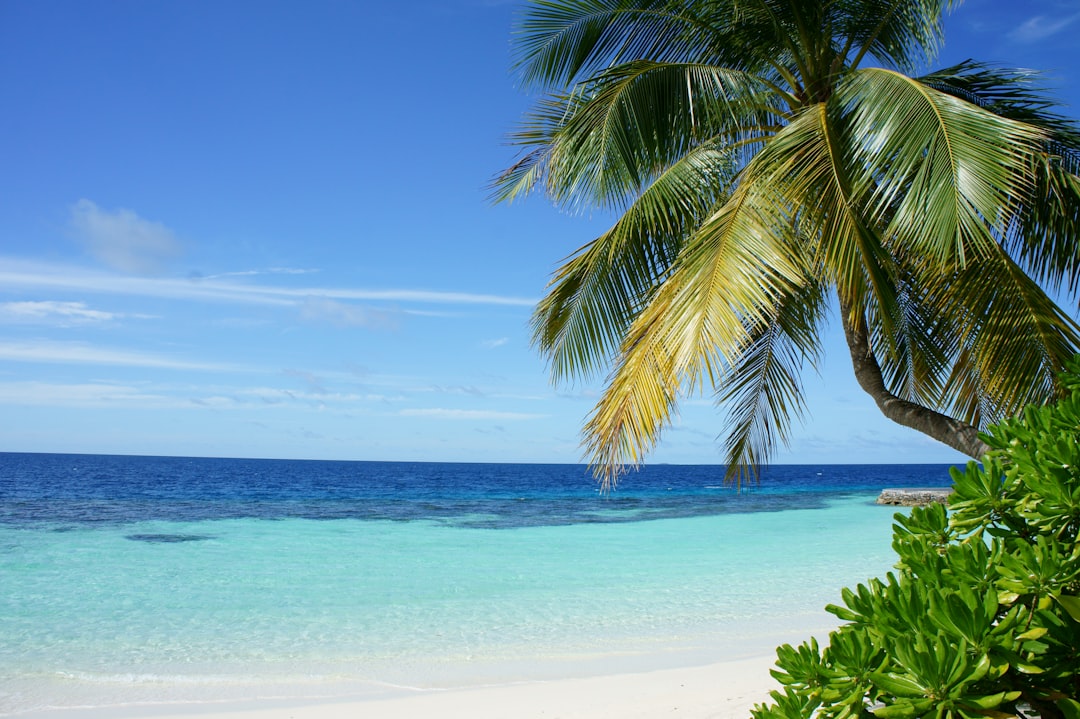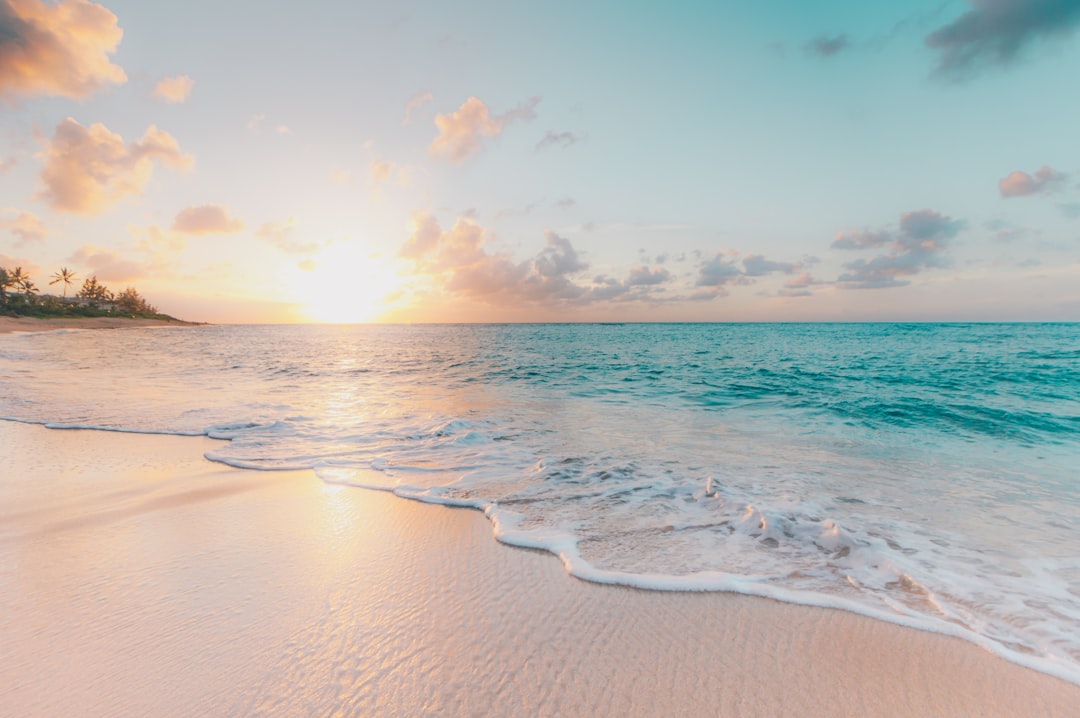Unveiling Tampa's Hidden Gem The Eco-Friendly Oasis at Sand Key Park Beach Resort
Unveiling Tampa's Hidden Gem The Eco-Friendly Oasis at Sand Key Park Beach Resort - Eco-Friendly Initiatives at Sand Key Park Beach Resort
Sand Key Park Beach Resort is increasingly focused on integrating eco-conscious practices into its operations. They've started offering programs that educate guests about the local ecosystem, aiming to foster a deeper understanding and appreciation for the surrounding wildlife and habitats. This approach hopefully encourages visitors to be more mindful of their impact on the environment. The resort also actively participates in beach clean-up activities, creating opportunities for guests to contribute to preserving the beautiful coastline while strengthening a sense of community responsibility. Further, in their ongoing efforts to reduce their environmental impact, the resort has implemented various measures such as using energy-efficient lighting and practicing responsible waste management. These initiatives highlight Sand Key's commitment to sustainability, making it an appealing destination for travelers who prioritize eco-friendly travel alongside relaxation and recreation.
Sand Key Park Beach Resort's commitment to environmental sustainability is evident in its various initiatives. Their stormwater management system, for instance, effectively captures and filters rainwater runoff, minimizing the impact on nearby natural habitats. This approach is noteworthy, considering the sensitive coastal environment of the location. The resort's landscaping utilizes native plant species, reducing the need for excessive irrigation and fostering a more biodiverse environment. This is a practical adaptation that aligns with the natural landscape.
Further, their integration of solar panels reflects a noteworthy attempt to reduce reliance on conventional energy sources. The extent to which these panels generate electricity, as claimed to be a substantial portion of their needs, is a point that would be interesting to investigate further from an engineering standpoint. Similarly, the adoption of advanced, energy-efficient appliances and LED lighting is indicative of modern engineering solutions within a hospitality setting. Although the 75% reduction in energy consumption they claim is significant, assessing the specific metrics used for this comparison would allow for better evaluation.
Their waste management program demonstrates a forward-thinking approach. Exceeding the national average for recycling in the hospitality industry speaks to a clear emphasis on reducing landfill waste. Rainwater harvesting, in addition to the stormwater management, offers an intriguing model for water resource conservation, especially in a coastal environment prone to variations in freshwater sources.
The resort's construction and renovation practices are also noteworthy. Using materials such as recycled concrete and reclaimed wood indicates a conscious effort to minimize construction waste and leverage alternative materials. However, the specific source and life cycle assessment of these materials would be of further interest. Sourcing seafood from sustainable sources is another example of considering ecological impacts beyond the resort's immediate footprint. It showcases the effort to protect a delicate marine ecosystem which ultimately impacts the resort.
The biofiltration system for their swimming pools, replacing harsher chemical treatments with a more eco-friendly approach, is another interesting example of advanced pool maintenance technology. The educational program, while helpful in raising environmental awareness, would benefit from more detailed assessment to gauge its actual impact on guests' knowledge of coastal ecology. It seems it is meant to bridge the gap between enjoying the amenities and understanding the local ecosystem, though the effectiveness of this method is yet to be established through study.
These different programs and initiatives provide an insightful glimpse into how the resort seeks to minimize environmental impact and promote sustainability. However, some aspects warrant closer examination to fully understand their effectiveness and to see how they could be further refined in line with the latest advancements in sustainability engineering.
Unveiling Tampa's Hidden Gem The Eco-Friendly Oasis at Sand Key Park Beach Resort - Natural Habitats and Wildlife Conservation Efforts
Tampa Bay's natural environment, encompassing a variety of habitats like hardwood forests, cypress swamps, and pine flatwoods, provides a home for a wide array of wildlife, including animals like white-tailed deer, wild turkeys, and various reptiles. Protecting these natural areas is a crucial part of the Tampa region's ecosystem, and initiatives like the Cypress Creek Nature Preserve and other protected lands are playing a vital role in maintaining a healthy balance. These preserves safeguard diverse ecosystems and offer opportunities for recreation such as hiking and spotting local wildlife. Encouraging people to experience these environments firsthand fosters a greater appreciation for the natural world and its importance. Community involvement in conservation efforts, like the guided tours offered through the area's conservation services office, can help connect residents and visitors with the region's natural heritage. These initiatives show a growing awareness and appreciation for the importance of preserving Florida's unique natural resources for future generations. There is a need to be vigilant about threats to these areas, like urban development, pollution, and invasive species, and continuous efforts are needed to safeguard the health of these habitats.
Tampa Bay and its surrounding areas harbor a diverse array of natural habitats, including hardwood forests, cypress swamps, and pine flatwoods. These environments support a range of wildlife, such as white-tailed deer, wild turkeys, and various reptile species. The Cypress Creek Nature Preserve, spanning 2,500 acres, exemplifies the area's ecological richness with its diverse ecosystems encompassing swamps, wet prairies, and towering cypress trees. It's a location frequently visited by those seeking immersion in the natural world.
Hillsborough County's commitment to conservation is evident through the Environmental Land Acquisition and Protection Program (ELAPP). This initiative has led to the acquisition of nearly 2,000 acres of pristine habitats, including palmetto prairie and riverine swamp, further contributing to the protection of the region's biodiversity. While ZooTampa at Lowry Park focuses primarily on animal care and conservation through advanced veterinary facilities, its role in housing over 1,000 animals does highlight the importance of providing a protected environment for some of the area's fauna.
Sand Key Park itself, though different from the more developed Clearwater Beach, offers a less crowded environment alongside a pristine beach, cabanas, amenities like playgrounds and a dog park. It's noteworthy that this park exists in an area with a diversity of habitats. Another example of natural beauty in the area, Hillsborough River State Park, provides opportunities for recreation, including hiking, canoeing, and wildlife viewing amongst its lush forest trails. These protected areas are vital for maintaining biodiversity and promoting the balance of ecosystems in the Tampa Bay area.
Guided tours of these preserves, offered through Hillsborough County's conservation services, provide opportunities to enhance one's understanding of these delicate ecosystems. The Cypress Creek Nature Preserve also allows visitors to experience these natural areas with their canine companions, providing a unique way to enjoy the local environment.
It's worth noting that the Tampa Bay area, like other coastal areas, experiences seasonal variations in wildlife due to migratory patterns. This is most notable with birds, highlighting the impressive avian diversity in the region. However, migratory patterns alone do not encompass all of the complex ecological dynamics of the area.
The research challenge related to these habitats remains significant, and factors like harmful algal blooms ("red tide") which can negatively impact both marine life and human health need careful consideration. The challenges surrounding the preservation of coastal ecosystems are further complicated by the fact that coastal habitats are extremely important for the capture of carbon. The mangroves around the region store carbon at a rate significantly greater than typical forests, raising a question of the effectiveness of current land protection methods in the face of rising sea levels.
Further challenges are present with regards to understanding the impact of human-built environments on natural populations. For example, while the nesting habits of sea turtles may be intriguing in terms of their innate ability to navigate, human activity along the shoreline can easily disrupt their natural patterns. Other coastal species, like the American crocodile and shorebirds, are particularly sensitive to encroachment from development, further highlighting the importance of strategic conservation efforts.
The role of oysters in the Tampa Bay area in filtering water and stabilizing shorelines is also crucial for the overall ecosystem health, but they too face challenges. Coral reefs, while not necessarily found in great abundance in Tampa Bay, are also facing increasing threats related to human activities. Understanding the interconnectedness of habitats and the movement of organisms between habitats is a challenge made easier by modern spatial data analysis tools. This offers an opportunity to develop a more comprehensive and effective approach to the management and protection of the ecosystems within and around Tampa Bay.
Unveiling Tampa's Hidden Gem The Eco-Friendly Oasis at Sand Key Park Beach Resort - Organic Dining Options and Local Sourcing
Sand Key Park Beach Resort's commitment to sustainability extends to the dining experience, with a growing emphasis on organic options and locally sourced ingredients. While details on specific offerings are not readily available, the resort's overall philosophy suggests a shift towards more conscious food choices. The rising popularity of organic and locally sourced restaurants in Tampa, such as True Food Kitchen and The Oxford Exchange, indicates a broader movement in the city. Restaurants like these emphasize the use of fresh, organic ingredients, often prioritizing farm-to-table practices.
This approach can offer diners a more flavorful and potentially healthier meal while also supporting local agriculture and reducing the environmental footprint of the food system. Ulele, a notable Tampa restaurant, offers a prime example of this connection between food and place, showcasing Native-inspired cuisine prepared with fresh, locally sourced ingredients. This movement towards sustainable dining reflects the growing awareness of the impacts of food production and consumption on the environment. The success of these restaurants and the increasing demand for organic and locally sourced food in Tampa suggest a growing movement towards environmentally and health-conscious dining within the broader city and perhaps within the resort's philosophy going forward.
Tampa's culinary scene, while often overlooked, offers a surprising variety of dining choices focused on organic and locally sourced ingredients. A few establishments, such as True Food Kitchen, have adopted a chef-driven approach centered around organic principles pioneered by Dr. Andrew Weil. This restaurant, along with The Oxford Exchange, has garnered attention for its commitment to organic and locally sourced dishes, particularly at lunch. Sweetgreen's more recent arrival in Tampa Heights brings a fresh, sustainable approach to the mix. It is interesting that these restaurants have chosen to operate in Tampa and it would be fascinating to study why they selected Tampa specifically.
Ulele, a notable restaurant on Tampa's Riverwalk, has earned recognition with a Michelin star and leans heavily on Native-inspired cuisine with an emphasis on fresh, local ingredients. The Boozy Pig stands out as a unique marketplace and eatery, focusing on providing locally sourced meats in a casual, hearty dining setting. While some may argue that focusing on a specific subset of food categories (organic, local) can unintentionally highlight issues of inequality regarding access to healthy food, it's nonetheless notable that these options are gaining ground in Tampa's diverse culinary scene.
Columbia Restaurant, a long-established Tampa institution, offers a more traditional perspective on the city's culinary heritage, demonstrating the wide array of styles found in Tampa. The food trends present in Tampa Bay would be a fascinating subject to explore in greater depth. One could focus on organic farms in the area to see how their practices affect the food available in Tampa's restaurants. It is noteworthy that organic farming methods, while often viewed positively, also pose some unique challenges for crop management and food safety.
It's also worth considering whether a broader shift toward locally sourced dining experiences can lead to a more resilient food supply in Tampa, potentially mitigating the impact of future disruptions in transportation or production. At the same time, it would be interesting to study how the environmental impact of food transportation and production vary between restaurants in the city to better understand where changes might have the largest effect. These are merely some of the food-related issues that require deeper understanding and assessment within the larger picture of Tampa's culinary development.
Unveiling Tampa's Hidden Gem The Eco-Friendly Oasis at Sand Key Park Beach Resort - Educational Programs on Environmental Stewardship
Sand Key Park Beach Resort's efforts to promote environmental awareness extend beyond its own operational changes to include educational programs. While the resort's educational programs are meant to connect the visitor experience with the broader ecosystem, it's unclear how effective they truly are at enhancing ecological knowledge among guests. The Tampa Bay area as a whole, however, is increasingly focusing on educational programs designed to cultivate a stronger sense of environmental responsibility among residents and visitors.
A number of organizations, including Tampa Bay Watch and Keep Tampa Bay Beautiful, are leading the way in developing and offering a range of educational initiatives. These initiatives are often quite broad and cover a wide range of environmental issues. These programs are not just designed to inform but also to spark active engagement in conservation. It's noteworthy that these programs are targeting not only the general population but also youth, particularly those who might be considered at-risk. Volunteer opportunities are a core component of many of these programs, providing a direct way for people to connect with the local environment through hands-on tasks like cleanups and restoration projects.
Further, community involvement in environmental protection is being fostered by organizations through grants and other funding opportunities. The Tampa Bay Estuary Program's Bay MiniGrants, for instance, provides funding for schools, community groups, and others to support local projects related to environmental stewardship. This demonstrates a clear recognition that fostering a local environmental consciousness is best done at the grassroots level. However, the effectiveness of these programs in actually changing visitor behaviors in the long run is something that is difficult to assess and may need to be studied further. The breadth and reach of these education initiatives provide some evidence of a growing community-wide push to integrate environmental awareness into daily life in Tampa.
Exploring the educational initiatives related to environmental stewardship around Sand Key Park Beach Resort reveals a landscape of possibilities for both learning and practical engagement. Several organizations play a role in fostering environmental awareness and action, with initiatives that range from research collaborations to hands-on restoration projects.
One area of interest is the potential connection between educational programs and local universities. If such partnerships exist, students could gain valuable field experience by participating in research projects directly related to the resort's environment. This collaborative approach could provide a bridge between theoretical knowledge and practical ecological management. However, the specifics of such collaboration would require further exploration.
Furthermore, the incorporation of citizen science projects presents a compelling model for involving visitors in monitoring and gathering data on local ecosystems. Birdwatching and species identification programs are potential avenues for public participation that could simultaneously increase public knowledge and contribute to scientific understanding. While the success of this approach might depend on the level of visitor engagement, the benefits in terms of data collection and environmental literacy are potentially significant.
The integration of traditional ecological knowledge into educational programming is another intriguing aspect. Workshops that explore indigenous practices for land management and conservation could provide unique insights that have been honed over generations. This approach could offer a different lens on sustainable practices and enhance the understanding of the area's natural heritage. However, the extent to which local indigenous communities are actively involved in these programs warrants further examination.
Beyond educational workshops, hands-on restoration projects offer valuable learning opportunities. Projects like restoring native plant communities or organizing beach cleanups allow visitors to directly participate in positive environmental actions and observe the tangible outcomes. This direct engagement could be more impactful in shaping individuals' perspectives and fostering a sense of personal responsibility for environmental stewardship.
Given the resort's coastal location, the focus on marine ecosystems in educational programs is also important. The delicate balance of marine life, the influence of oceanographic factors, and the role of coastal habitats are all crucial elements to understanding the local environment. However, a critical assessment of the specific educational content offered in these programs would be necessary to gauge their effectiveness in conveying complex ecological concepts.
The manner in which education is delivered is also relevant. The incorporation of interactive learning tools, like mobile apps and virtual reality experiences, could further enhance engagement and understanding. Such tools could potentially make the learning process more appealing and accessible to a wider audience. It would be intriguing to assess whether such techniques are currently in use, and if so, how effectively they enhance visitor learning.
Educational programs often highlight Tampa Bay as a biodiversity hotspot. This approach could help attendees recognize the region's unique ecological importance and the role it plays in supporting a remarkable diversity of species. It would be interesting to examine whether these programs clearly emphasize the region's significance and connect it to the broader importance of preserving biodiversity.
Finally, the potential for certification programs related to environmental stewardship is an intriguing possibility. Offering certificates to guests who complete specific educational activities could encourage lifelong learning and empower them to spread their knowledge and promote sustainable practices in their own communities. The specific criteria for obtaining certification and the actual impact of such programs on individuals' behavior are important elements that require careful consideration.
In conclusion, educational programs related to environmental stewardship represent a vital component of Sand Key Park Beach Resort's commitment to sustainability. While these initiatives offer a pathway to foster a greater understanding and appreciation of the environment, the need to assess program effectiveness and tailor content to maximize impact remains crucial. Furthermore, exploring the extent of collaboration with local universities, indigenous communities, and the utilization of innovative learning tools could further refine these efforts and enhance their contributions to ecological preservation in the Tampa Bay region.
Unveiling Tampa's Hidden Gem The Eco-Friendly Oasis at Sand Key Park Beach Resort - Green Transportation Solutions for Guests
Sand Key Park Beach Resort's dedication to environmental stewardship extends to encouraging guests to embrace sustainable transportation options. While the resort itself focuses on operational efficiencies, it's also important for visitors to consider their own travel footprint. Tampa offers a variety of green transportation options designed to reduce the environmental impact of guest travel. This includes exploring the use of electric vehicles, bicycles, and the public transit system, including options like the Downtown Area Shared Hubs (DASH) system. The resort likely encourages guests to utilize these options as they would contribute to the resort's overall environmental goals. It seems there's an emphasis on walking and cycling as a way to experience the local environment more directly and at a slower pace. However, the actual effectiveness of encouraging alternative transportation methods is difficult to ascertain. It remains a valid question whether these types of campaigns can be successful in significantly reducing visitor carbon emissions in the long term. Promoting a less car-dependent approach is not just about reducing emissions, it may also provide a more meaningful experience, allowing guests to experience the surroundings rather than rush through them. Regardless of the method, the ability to reduce emissions and the potential for creating a better guest experience seem to be the underlying goals.
Considering the resort's focus on environmental responsibility, it's interesting to examine how they address transportation options for guests. They've implemented a fleet of electric shuttles, which, aside from being quieter, likely reduce operating costs significantly. These shuttles reportedly can cover nearly 100 miles on a single charge, showcasing the potential for efficiency in this type of transportation.
The resort also offers bicycle rentals and has integrated a network of bike paths. While it's not always practical, cycling offers a substantial reduction in emissions compared to driving, especially for shorter distances. Their promotion of carpooling is another facet of their green transportation approach. Studies indicate that shared rides can significantly reduce emissions per vehicle, so this practice could have a noteworthy impact.
Sand Key Park Beach Resort's location allows guests relatively easy access to public transit options, which, based on some studies, can lead to a considerable reduction in individual carbon emissions, especially in urban areas. It's also noteworthy that they've installed multiple electric vehicle charging stations. Though the production of electricity does itself involve emissions, studies suggest EVs produce less than half the emissions of comparable gas cars, making them an appealing choice.
They've further incorporated mobile applications that connect guests to various local transportation services, including electric scooters and ride-sharing options. These apps, while not always perfectly designed, show a movement towards optimizing travel routes through different modes. Furthermore, the resort partners with organizations that invest in carbon offset projects, enabling guests to essentially compensate for the emissions related to their travel. The efficacy of carbon offsetting is still debated, but it does provide a mechanism for people to consider their travel's impact.
Walking is also promoted as a way to explore the immediate environment, which, of course, involves zero emissions. It's a simple but effective method for encouraging low-impact transportation. The resort also supports the use of shared limousines for larger groups, helping to reduce the number of vehicles on the road for such trips. And they are part of a network that provides connections to other local attractions via more sustainable transportation choices like hybrid buses. This collaborative approach can enhance accessibility while mitigating the emissions related to traveling to nearby sites.
It's intriguing to study how these different transportation solutions perform in practice, how often guests utilize them, and how effective these strategies are in reducing the overall environmental impact related to travel to the resort. The integration of technology, like the mobile apps, might offer a way to track usage patterns and potentially fine-tune the offered options to improve efficiency and guest satisfaction. Furthermore, it would be useful to compare how much travel-related emissions the resort has actually reduced, and how their strategies for encouraging sustainable transport are changing over time. It's important to note that the effectiveness of these strategies, and of the green initiatives generally, would be enhanced by further investigation and refinement.
More Posts from trymtp.com:
- →Lock Haven's Hotel Scene A 2024 Update on Amenities and Proximity to Local Attractions
- →7 Hidden Costs That Can Double Your Aruba All-Inclusive Resort Bill in 2024
- →The Evolution of High-Limit Gaming on the Las Vegas Strip A 2024 Analysis
- →Uncovering Las Vegas 7 Budget-Friendly Hotels Under $60 in October 2024
- →Los Angeles Convention Center's Hotel Ecosystem A 2024 Analysis of Proximity, Pricing, and Amenities
- →7 Hidden Fees to Watch for When Booking Cancun All-Inclusive Resort Packages with Airfare




